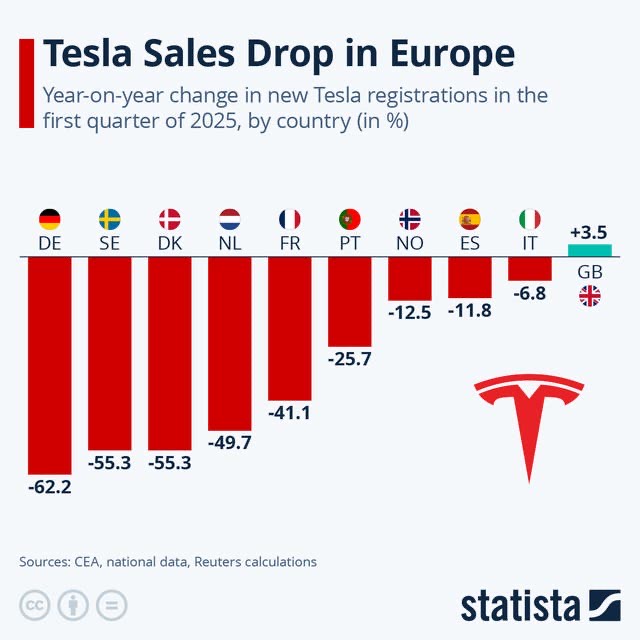There was a time when the air in Zuffenhausen smelled of success and the confidence of endless growth. Porsche was the brand that never stumbled, the company that made perfection seem routine. Yet this year the balance sheets told a very different story.
For the first time in living memory, Porsche has posted a loss. Not a minor dip or a brief misfire, but a full-blown financial skid. In the third quarter of 2025, the company recorded an operational loss of nearly one billion euros. Across the first nine months of the year, profits collapsed from around four billion to just forty million. The figures landed like a crash through the guardrail at La Source.
The roots of Porsche’s decline lie in its costly electric gamble. Determined to lead the luxury EV revolution, the company poured billions into its own battery programme and an ambitious range of electric cars. The goal was clear: by 2030, eighty percent of new Porsches would run silently rather than roar. The market, however, had other ideas.
Buyers loved the Taycan’s design and speed, but hesitated at the price and limited range. High costs and lukewarm demand forced Porsche to retreat. The battery division was scrapped, new electric SUVs cancelled, and the firm took a three billion euro write-down. The pivot back to hybrids and combustion engines restored a little sanity, but the damage was done. Investors saw indecision. Customers saw confusion.
External pressures made things worse. In America, new tariffs on European luxury cars have already cost Porsche hundreds of millions of euros. Prices have risen, and demand has fallen. Across the Pacific, China’s once-booming market for Western prestige cars has cooled sharply. Sales dropped by more than twenty-five percent as domestic electric brands took centre stage.
Europe offered no comfort either. Economic fatigue and tighter emissions laws have hit the high-end market. Even the 911, the timeless heartbeat of Porsche, faces an uncertain future in a world determined to phase out petrol. Volkswagen Group, Porsche’s parent company, has reported its own steep drop in profit, much of it linked to this turmoil in Zuffenhausen.
The response has been fast and severe. Around four thousand jobs have already gone, and restructuring costs have topped three billion euros. Meetings that once celebrated lap times now focus on cost savings. Michael Leiters, Porsche’s new chief executive and a former McLaren man, has inherited the unenviable task of restoring confidence while steering a bruised and bewildered company back to growth.
Behind the scenes, engineers are refocusing. Porsche will rely on its most loyal strengths: craftsmanship, performance, and the feel of quality that no algorithm can reproduce. Future cars will blend petrol and electric power rather than replace one with the other. The idea is to rebuild gradually, balancing innovation with identity.
For decades, Porsche was defined by certainty. Every car, from the 911 Turbo to the Macan, carried the same message of precision and purpose. But the modern world is no longer so simple. Customers expect luxury, performance and sustainability in a single package. Governments demand cleaner cars. Markets demand profit. Somewhere in that storm, Porsche lost its footing.
Yet history suggests the brand knows how to recover. In the early Eighties, Porsche faced a similar reckoning. Sales were weak, costs were high, and purists feared the end of the 911. The company survived by listening to its engineers rather than its accountants. It rediscovered its essence. That may be the lesson Zuffenhausen needs again today.
If Porsche can blend its heritage with a clearer, more measured path to electrification, it could regain its balance. The 911 remains a global icon, and the Taycan, for all its struggles, proved that electric Porsches can still thrill. What the brand needs now is consistency and patience. The next great Porsche story will not be written in spreadsheets but in steering feel, design integrity and engineering bravery.
For now, though, Porsche’s halo has dimmed. The numbers are harsh, the markets unforgiving, and the pressure immense. Yet if any marque can turn a loss into a lesson, it is the one that made imperfection an art form.
– Refocus the product line: Build hybrids and performance models that maintain the emotional core of the brand while easing customers toward electric power.
– Control production costs: Simplify supply chains, delay unnecessary launches, and invest only in platforms that deliver profit and flexibility.
– Strengthen brand storytelling: Reignite the emotional link between car and driver through heritage design cues and motorsport engagement.
– Win back key markets: Adjust pricing and marketing strategies in the United States and China to match shifting buyer sentiment.
– Prepare for the long term: Develop a steady, sustainable EV roadmap that doesn’t gamble the company’s identity on unproven demand.
If Porsche manages to balance its heart with its head, it will emerge stronger. The figures may be grim today, but the brand’s legacy of resilience remains intact. The brand is used to the smell of victory.
